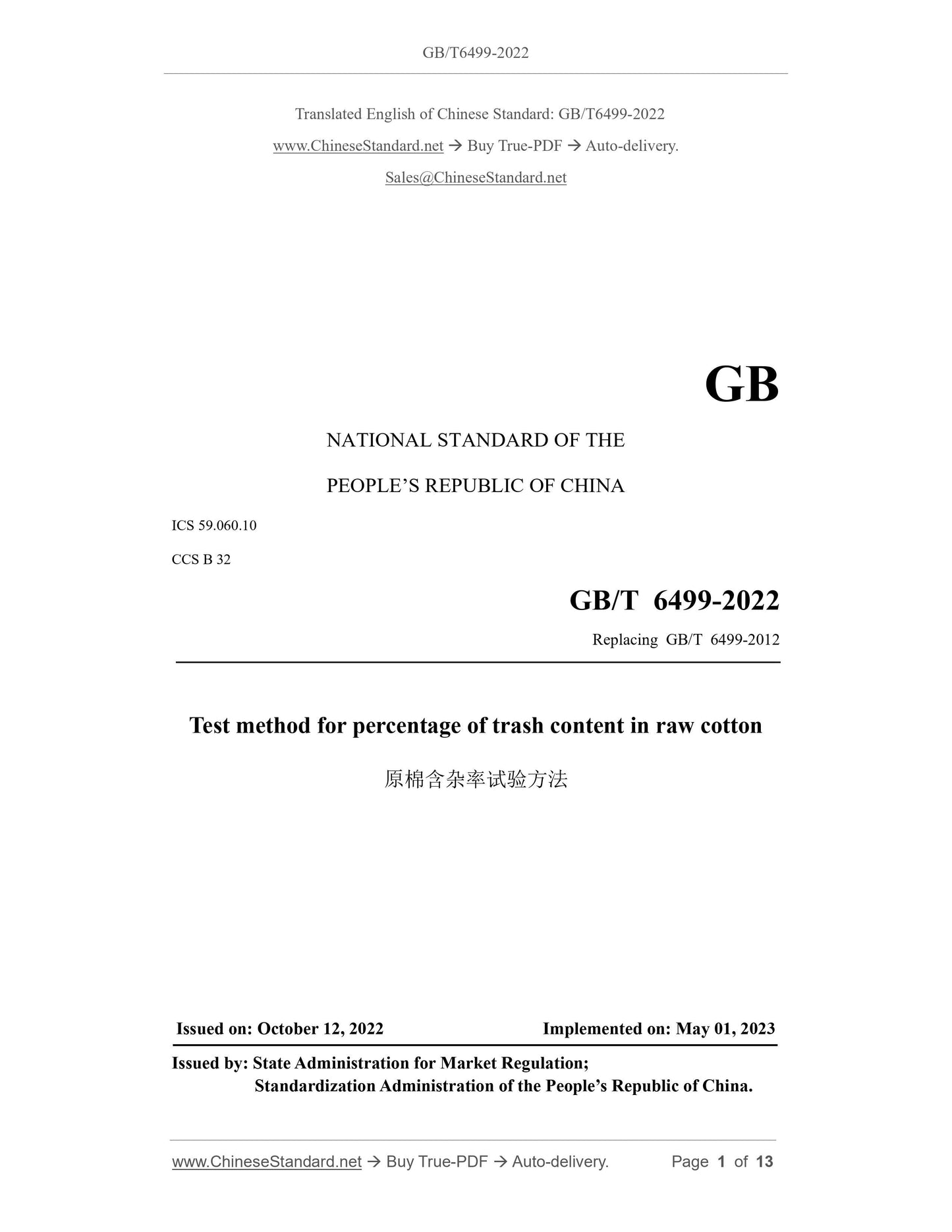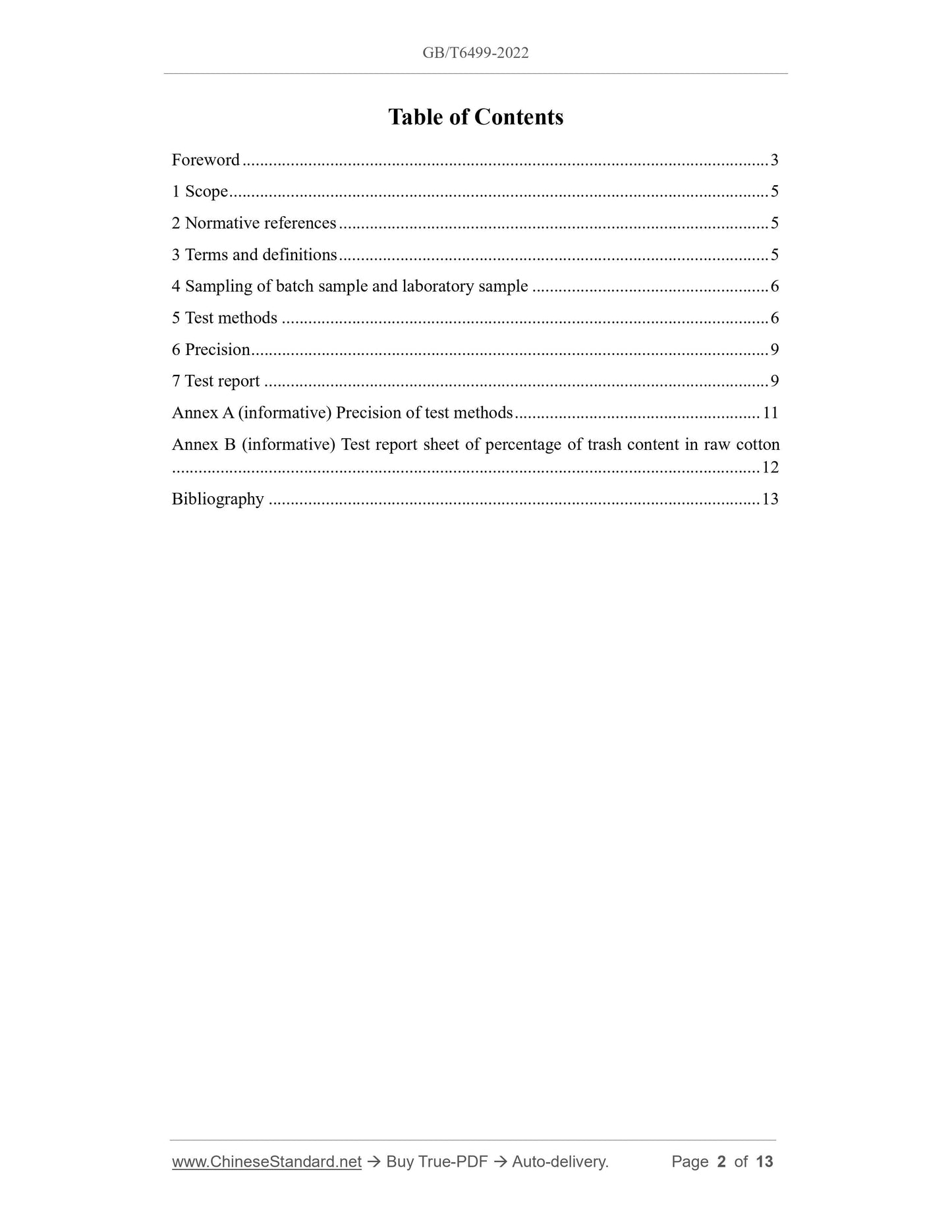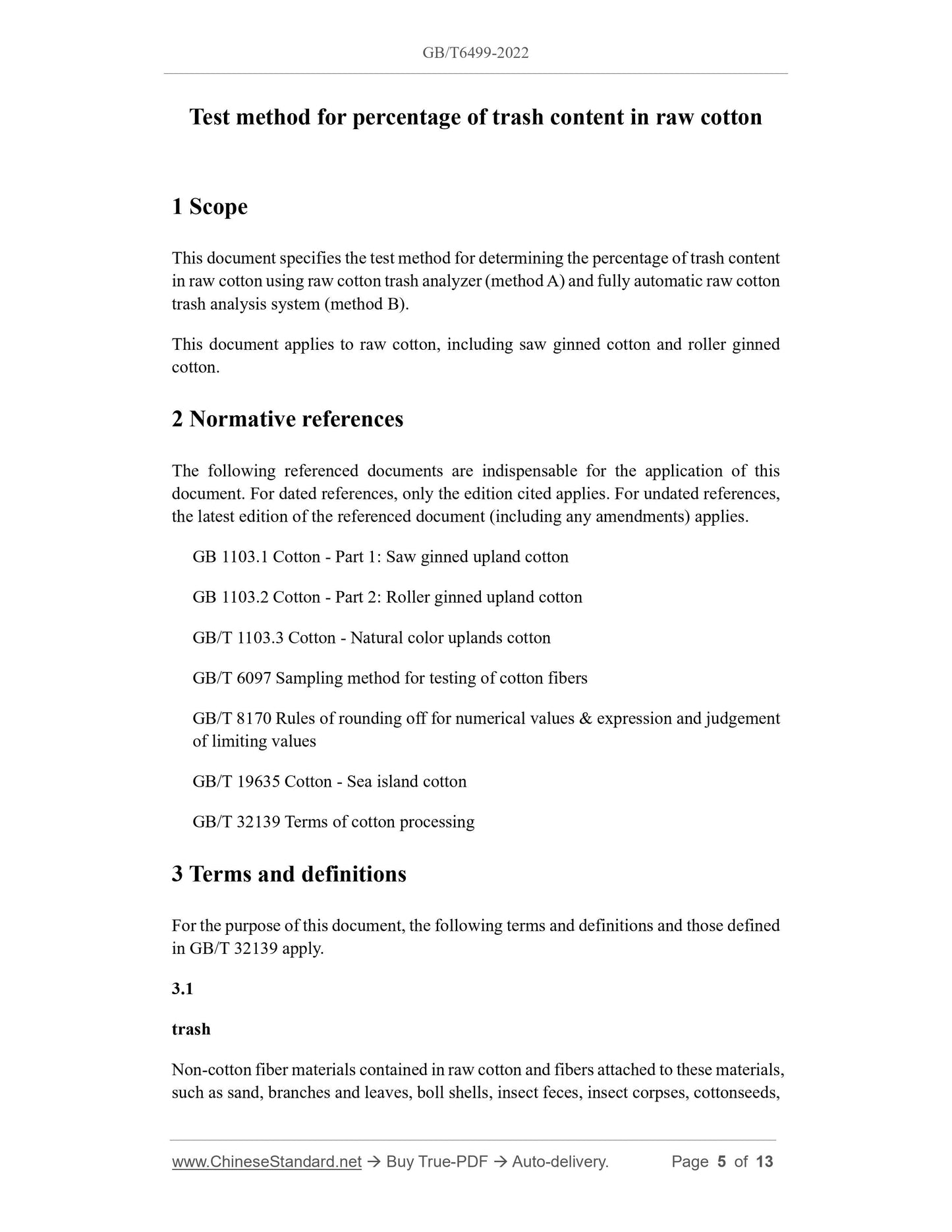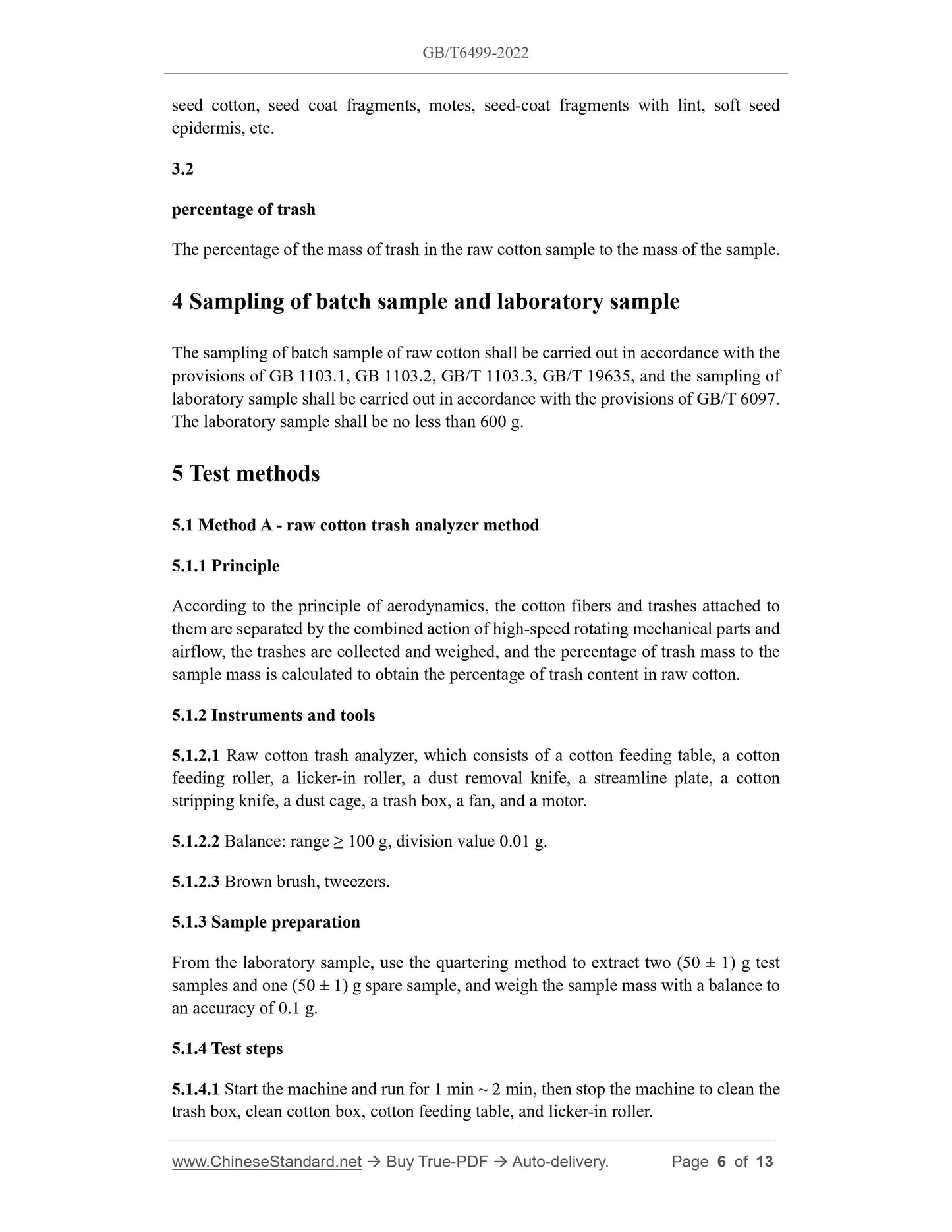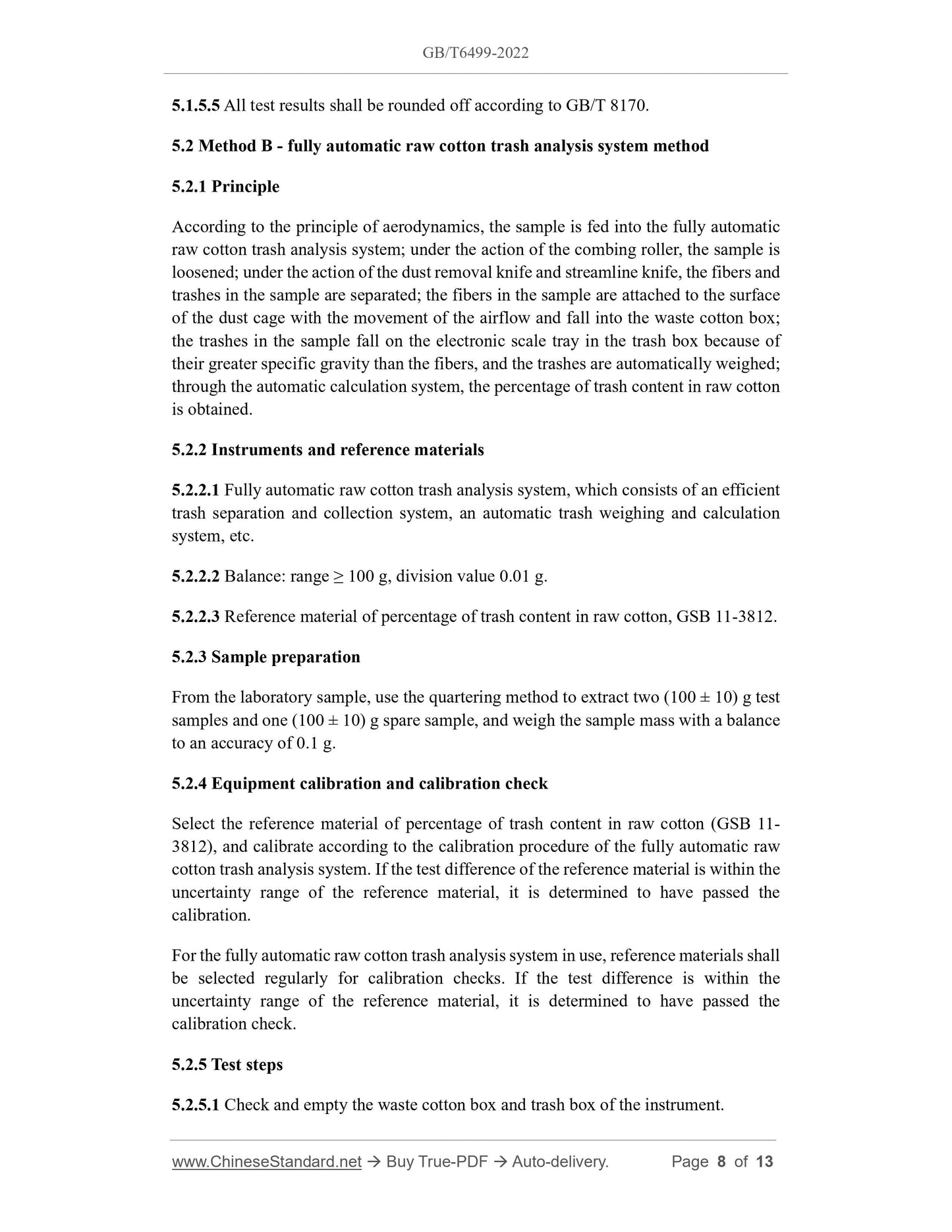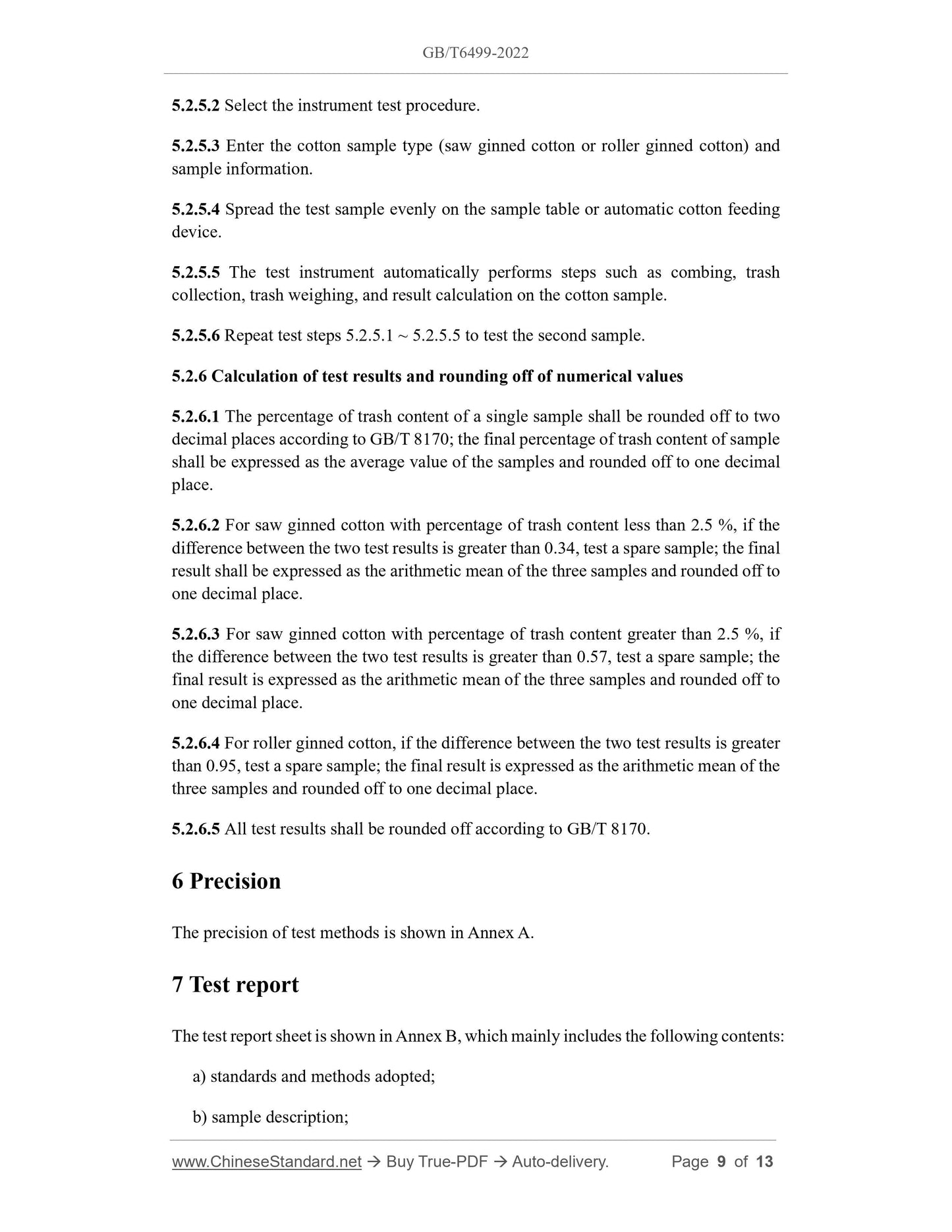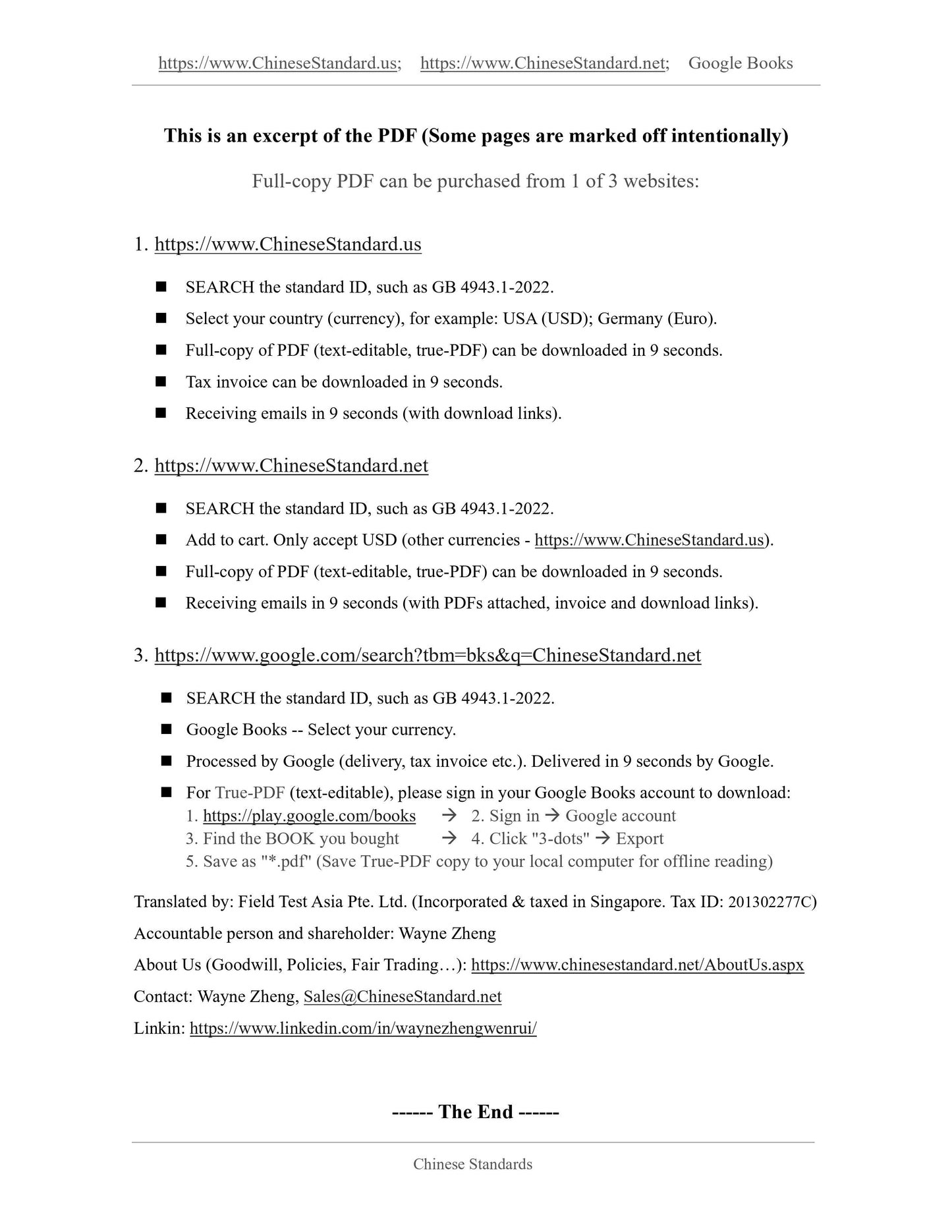1
/
of
7
www.ChineseStandard.us -- Field Test Asia Pte. Ltd.
GB/T 6499-2022 English PDF (GB/T6499-2022)
GB/T 6499-2022 English PDF (GB/T6499-2022)
Regular price
$170.00
Regular price
Sale price
$170.00
Unit price
/
per
Shipping calculated at checkout.
Couldn't load pickup availability
GB/T 6499-2022: Test method for percentage of trash content in raw cotton
Delivery: 9 seconds. Download (and Email) true-PDF + Invoice.Get Quotation: Click GB/T 6499-2022 (Self-service in 1-minute)
Newer / historical versions: GB/T 6499-2022
Preview True-PDF
Scope
This document specifies the test method for determining the percentage of trash contentin raw cotton using raw cotton trash analyzer (method A) and fully automatic raw cotton
trash analysis system (method B).
This document applies to raw cotton, including saw ginned cotton and roller ginned
cotton.
Basic Data
| Standard ID | GB/T 6499-2022 (GB/T6499-2022) |
| Description (Translated English) | Test method for percentage of trash content in raw cotton |
| Sector / Industry | National Standard (Recommended) |
| Classification of Chinese Standard | B32 |
| Classification of International Standard | 59.060.10 |
| Word Count Estimation | 10,154 |
| Date of Issue | 2022-10-14 |
| Date of Implementation | 2023-05-01 |
| Older Standard (superseded by this standard) | GB/T 6499-2012 |
| Issuing agency(ies) | State Administration for Market Regulation, China National Standardization Administration |
Share
